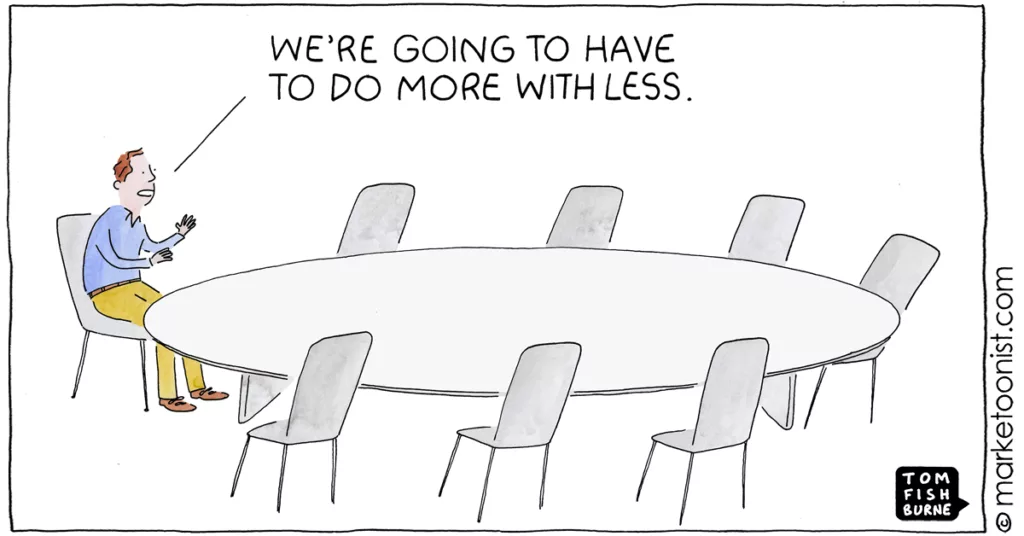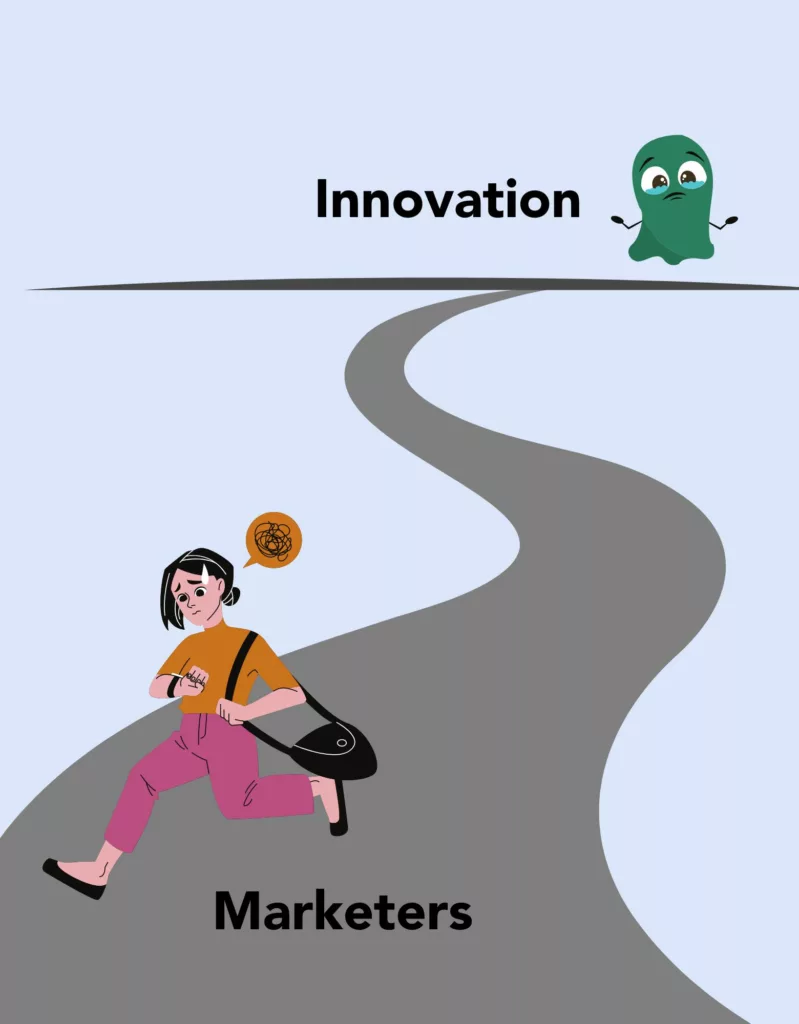Derrick Hoog is one of my favorite humans on the planet. He’s our VP of Strategy over at 5by5. We’ve worked together for 7 years now and since the very early days when we shared an office and he had to listen to all my calls (still sorry about that), we’ve been great teammates. Part of the reason for our great partnership, other than my amazing humor, is because we approach strategic planning from two very different perspectives.
My default wiring is to be an optimizer, while Derrick is more of an innovator. I’m sure there is a personality test somewhere that explains all this, but honestly there are too many to keep track of so I won’t pretend to know if this is a Meyer’s Briggs, Enneagram, DISC, or Strength Finders thing.
What I do know is that I approach most of our client’s problems by first asking, “what resources are available here?” That doesn’t just mean budget – that includes everything from money, time, expertise, partnerships, audiences, content, positioning, etc. But Derrick’s approach leans much more into starting with the question “what’s possible?”
For years I didn’t realize the significance of this first question, but now I see it all the time and the best way I know to describe it is the healthy, unavoidable tension between attempting to do more/better with what resources you have (optimization) vs. finding new opportunities (innovation). And my goodness is that tension alive and well in the early parts of this year.
The difference between optimization and innovation
I think of it this way – optimization is the practice of trying to get better results from your existing resources – primarily time and money. Innovation is the practice of coming up with new value or methods to try and multiply your returns. To use a simple and possibly dumb analogy, imagine you’re the marketing director for a locally owned grocery store and you’re trying to sell more fresh produce.
If you’re thinking like an optimizer, you may test different variations of your weekly newspaper coupon to see how different promotions might get more people to buy fruit. This week it’s a 20% sale on grapes, next week it’s 30% off bananas. This can be a very effective method that is employed everyday by millions of digital marketers and AI machines trying to optimize ads on the internet. We do it daily. But that process of tweaking will never lead to the idea that maybe you should create a roaming fruit truck to bring fresh produce to your customers at home.
Everyone is optimizing these days
I hear a lot of marketers focusing their efforts on optimization right now. Maybe it’s the uncertain economic outlook, the changing digital landscape, or just my own confirmation bias.
As he often does, Tom Fishburne beautifully captured the tension many marketing teams are facing with having to do more with less

The inherent risk is that optimization is only effective to a point. For instance, let’s say you’re the Marketing Director for a b2b organization running lead generation campaigns using digital advertising.
Optimization is wonderful for helping you to make those dollars go as far as humanly possible and drive your cost per lead further and further down. But optimization will not help you figure out that you could get 10x the leads by attending a new conference on the opposite coast. Or to use an even better example – optimization won’t highlight how susceptible your industry is to disruption and may leave you blindsided when someone figures out how to provide your same value for a tenth of the cost using AI.
Marketing innovations worth considering
If you want a good gut check for how much you’re attempting to innovate this year – I’d take a look at your marketing budget. Chances are, there are a lot of things on there that are proven efforts. That’s awesome. You should be running the digital ads that keep the lead generation machine running. But are there any dollars in that spreadsheet dedicated to trying something new – or did all of it get cut? When the CFO tells everyone to cut 15% and focus heavily on ROI, that’s typically what happens.
If you’re looking for ideas, here are a few broad categories for what innovation may look like for your team in 2023.
- Possibly the first thing should be asking your customers what they want
- Test new products/services – especially ones that lower the barrier to entry to working with you
- Take a new look at your live event / conference plans – it’s not 2020 anymore
- Test out new channels for advertising (maybe even ones you’ve previously written off)
- Get really serious about investing in content marketing – try making the quality you’ve dreamed of
No matter how or what you decide to innovate, I think the most important thing is for all of us marketers to stay brave. Keep testing and searching for new ways to reach people. What got us here won’t get us there.

